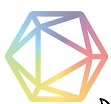Feasibility Analysis of Inquiry-Based Learning DesignSocio-Scientific Issues (SSI) to Improve Students' Halal Literacy and Critical Thinking Skills on Additives and Addictive Substances
Abstract
This study aims to analyze the feasibility of an inquiry-based Socio-Scientific Issues (SSI) learning design developed to enhance halal literacy and critical thinking skills among junior high school students on the topic of additives and addictive substances. The research employed a descriptive quantitative approach with a Research and Development (R&D) method, focusing on the product validation stage. Data were collected through validation sheets completed by three expert validators, covering 11 assessment components with a total of 57 aspects. The data were analyzed by calculating the feasibility percentage of each component. The validation results indicated an average feasibility score of 97.6%, categorized as excellent. These findings suggest that the developed learning design meets the criteria of content completeness, clarity of objectives, appropriateness of approach, and assessment feasibility, making it suitable for implementation in subsequent learning stages.
Keywords
Full Text:
PDFReferences
Arikunto, S. (2013).Basics of Educational Evaluation. Jakarta: Bumi Aksara.
Arikunto, S. (2013). Dasar-Dasar Evaluasi Pendidikan. Jakarta: Bumi Aksara.
Arikunto,Suharsimi. (2010). MetodologiPenelitianSuatuPendekatan Praktis. Jakarta: Pustaka Bakti Pertiwi.
Bruner,J.S.(1966).TowardaTheoryofInstruction.Cambridge,MA:Harvard University Press.
Carpenter, T. P., & Moser, J. M. (2000). Making sense of mathematics: Teaching and learning in the primary years. Portsmouth, NH: Heinemann.
Dale, E. (1969). Audio-Visual Methods in Teaching (3rd ed.). New York: Dryden Press.
Hartono. (2023). Pengaruh Penggunaan Media Papan Jurang terhadap Motivasi dan Minat Belajar Matematika Siswa Kelas 2 SD dalam Pembelajaran Pengurangan Angka Kecil dengan Angka Besar. Skripsi/Tesis, [Nama Institusi atau Universitas].
Herzberg,F.,Mausner,B.,&Snyderman,B.B.(1959).TheMotivationtoWork.
Indriani, R. (2023). Peningkatan Prestasi Belajar Matematika Melalui Penggunaan Media Papan Jurang pada Siswa Kelas 2 SD. Skripsi/Tesis, [Nama Institusi atau Universitas].
Kartika, D. (2024). Efektivitas Penggunaan Media Papan Jurang dalam Pembelajaran Pengurangan Angka Kecil dengan Angka Besar pada Siswa Kelas 2 SD. Skripsi/Tesis, [Nama Institusi atau Universitas].
Kunandar. (2010). Penelitian Tindakan Kelas, Sebagai Perkembangan Profesi Guru (Ed. 1-2). Jakarta: PT Rajawali Pers.
Maslow, A. H. (1943). A theory of human motivation. Psychological Review, 50(4), 370–396.
NewYork:John Wiley& Sons.
Piaget, J. (1952).TheOriginsofIntelligenceinChildren. NewYork:International Universities Press.
Piaget, J. (1952).TheOriginsofIntelligenceinChildren. NewYork:International Universities Press.
Piaget, J. (1970). Science of education and the development of intelligence. New York: Grossman.
Pratiwi, A. (2023). Efektivitas Penggunaan Media Papan Jurang dalamMeningkatkan Kemampuan Pengurangan Angka Kecil dengan Angka Besar pada Siswa Kelas 2 SD. [Nama Institusi atau Universitas, jika ada].
Rusman.(2011).StrategiPembelajaranMatematika.Bandung: Alfabeta.
Smith, J. D., & Walker, I. (2014). The role of mathematics in developing critical thinkingskills. InE. M. Furman&A. J. Peressini(Eds.), Beyondthe basics: Secondary mathematics education in the 21st century (pp. 83-104). Information Age Publishing.
Sri Hastuti, dkk. Sri Hastuti, dkk. 2021Peningkatan Hasil dan Minat Belajar Materi Penjumlahan dan Pengurangan Menggunakan Papan Jurang Pada Siswa Kelas III SD Negeri Suryodiningratan 2
Sri Hastuti, dkk. Sri Hastuti, dkk. 2021Peningkatan Hasil dan Minat Belajar Materi Penjumlahan dan Pengurangan Menggunakan Papan Jurang Pada Siswa Kelas III SD Negeri Suryodiningratan 2
Sudjana, N. (2010). Penilaian Hasil Proses Belajar Mengajar. Bandung: Remaja Rosdakarya
Suryana, D., & Suyanto. (2016). Perkembangan Kemampuan Berhitung Anak Usia Dini Melalui Bermain Peran. Jurnal Pendidikan Anak Usia Dini, 5(2), 123-134.
Tampubolon, D. P. (1987). Kemampuan dan Keterampilan(3rd ed.). Jakarta: Rineka Cipta.
Usman, M. B., & Asnawir, H. (2002). Media Pembelajaran(2nd ed.). Jakarta: Ciputat Press.
VandeWalle,J.A.,&Karp,K.S.(2017).Elementaryandmiddleschool mathematics: Teaching developmentally. Pearson.
Widyastuti,E.(2014).PembelajaranMatematikadiSekolahDasar(2nded.).
Yogyakarta:UniversitasNegeriYogyakarta.
DOI: http://dx.doi.org/10.58258/jime.v11i4.9340
Refbacks
- There are currently no refbacks.
Copyright (c) 2025 Laeli Kurmatillah

This work is licensed under a Creative Commons Attribution-ShareAlike 4.0 International License.

JIME: Jurnal Ilmiah Mandala Education (p-issn: 2442-9511;e-issn: 2656-5862) is licensed under a Creative Commons Attribution-ShareAlike 4.0 International License.
Jurnal ini diterbitkan oleh Lembaga Penelitian dan Pendidikan (LPP) Mandala.
Alamat: Jl. Lingkar Selatan, Perum Elit kota Mataram Asri Blok O. No. 35, Jempong Baru, Sekarbela, Kota Mataram NTB.







.png)



